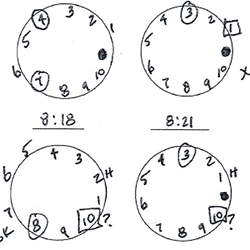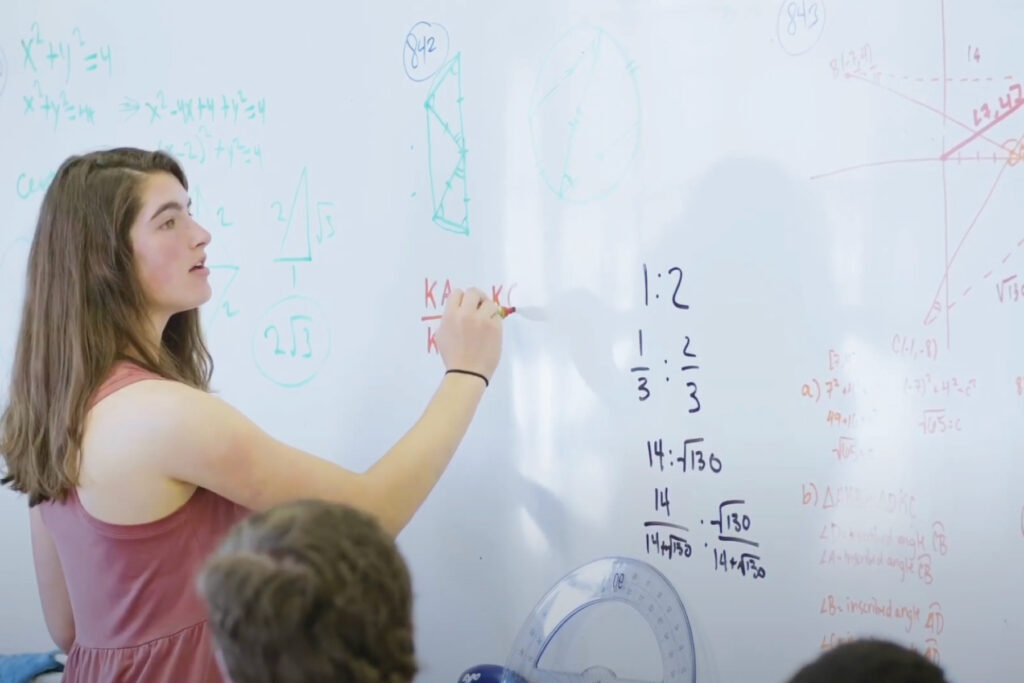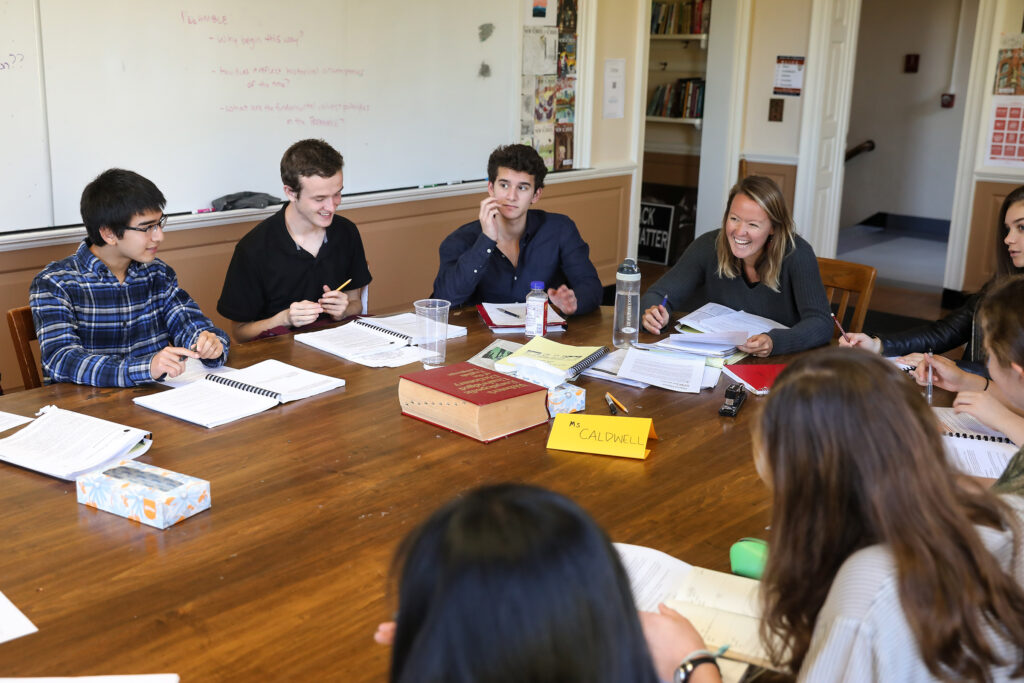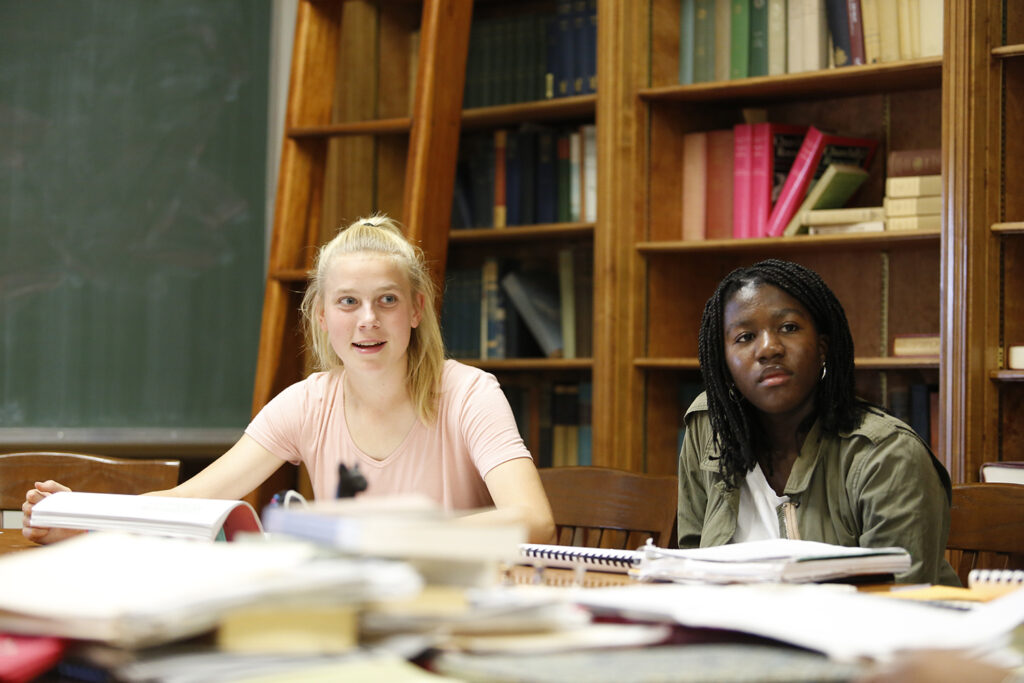How to Harkness
Exeter instructors have collaborated to create a set of tools and videos for teachers anywhere to use to observe, assess and enhance classroom participation. We hope you will find these useful in implementing student-centered learning in your classrooms and schools.
At Exeter, instructors routinely use the table diagram to map classroom interactions as they unfold. You may want to invite a classroom observer to help with data capture for the other tools.
A good Harkness class is all about how the discussion comes together. Watch a full Harkness class in action below.
Tools for the table
The Table
The Table is an oblong that helps you map who speaks. Teachers use this, often with students, to reflect on participation and interactions. Download here.

Time Speaking
The Time Speaking bar graph helps you track interactions in more detail, including the duration and order of comments. Download here.

Student Comments
The Student Comments form provides snapshots from the classroom. It was designed to isolate individual student contributions and behaviors over one class period. Download here.

Body Language
The Body Language tracker is useful for teachers new to discussion-based teaching. It helps attune instructors to nonverbal participation and can provide insight into the ways quieter students engage. Download here.

Harkness in action
Watch a geometry class
This geometry class is typical within Exeter’s integrated math program: Students present their ideas for solutions to homework problems on the board and work with one another to discover and evaluate different pathways to a solution. The instructor nudges her students to access material from previous lessons and make connections with current problem sets. Exeter’s problem sets are designed to enable students to discover new concepts, eliminating the dependence on teachers to introduce ideas. Each class is a time to collaborate, share ideas and strengthen understanding.

Watch a physics class
Launching new material can alter the structure of a typical Harkness class. Here, the start of a new physics unit requires increased teacher direction and demonstration. As a unit progresses, students participate more, develop dexterity with the material and assume ownership of the group work.

Watch a history class
Eleventh graders at the end of studying Civil Rights consider Malcolm X and Martin Luther King, Jr. Their instructor discusses tactics for bringing all students in to the complex conversation.

Watch a French class
First-year French students and their teacher discuss how group conversation about reading assignments builds vocabulary and creates familiarity with correct pronunciation. The first segments of the class follow a structure familiar to the students: first, casual conversation, then, assessing grammar homework, and next, discussing a short novel. With this routine, speaking entirely in French is achievable even for this introductory course. Student collaboration comes to life when the class moves to the board to write and speak French in small groups.
